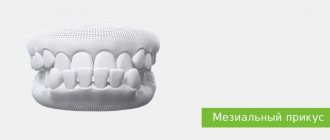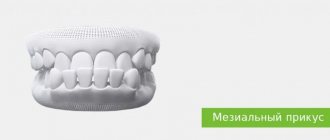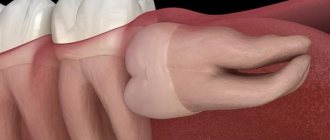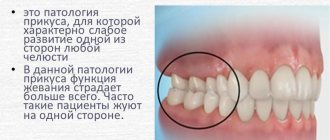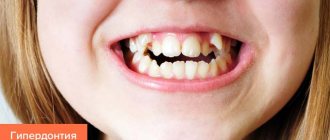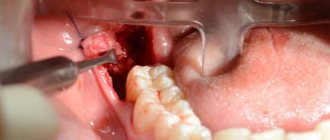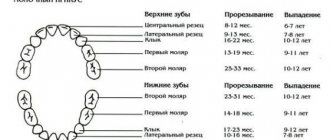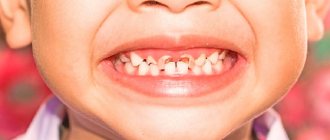When deciding on the correction of aesthetic defects of the face and creating an image, first of all, one should take into account the general impression that the patient’s appearance will make on others. Face perception includes static and dynamic components.
The dynamic component of the image is emotionality. All human emotions - both positive and negative - are manifested, among other things, by facial activity. Expression wrinkles are individual in nature and depend, first of all, on the person’s age and the severity of subcutaneous fatty tissue. Over time, they deepen, transform into static folds and can be perceived by others as manifestations of the characterological characteristics of a person, since they often become a reflection of a person’s lifestyle and his emotions.
The static component is the shapes, volumes, proportions, geometry of the entire face and its individual zones, the degree of severity of age-related structural changes. The static component is largely of a congenital, or genetically determined, nature, with the exception of those changes that arose as a result of the influence of damaging factors (birth injuries, inflammatory processes, for example, inflammation of the trigeminal, facial nerves, dental diseases leading to dentition, and other pathologies , etc.).
The shape of the face in general, and the lower third in particular, is extremely influenced by the presence of bruxism (periodically occurring episodes of involuntary contraction of the masticatory muscles, accompanied by clenching of the jaws and grinding of teeth). Prolonged tension of the masticatory muscles visually makes the lower third of the face heavier and leads to a change in the shape of the face. The face of such patients becomes square, in some cases leading to asymmetry.
Mesial occlusion or progenia: what is it?
Several centuries ago, people with mesial occlusion were considered mentally retarded.
A similar defect was present in the composer Richard Wagner and Emperor Charles V, but such great people could not achieve great success with mental disabilities, so the theory was not confirmed. Since with a mesial bite the lower jaw is pushed forward, the face takes on a menacing and angry appearance. That is why pathology contributes to the formation of not only aesthetic, but also psychological problems: a person feels uncomfortable with such a defect. Problems of the dental system also develop. Incomplete closure of the teeth and the resulting gap between the jaws contribute to the accelerated proliferation of pathogenic microflora, which leads to various diseases of the oral cavity. Treatment of mesial occlusion is important not only for restoring facial aesthetics, but also for preventing various dental diseases.
Facial asymmetry
Closing the list of main variants of malocclusion is crossbite, caused by uneven development of the upper or lower jaw, on one side or the other. Crossbite can be either bilateral or unilateral, affecting both the lateral and anterior dentition. The essence of the anomaly is that the correct overlap of the lower teeth with the upper ones is disrupted. In addition to the pronounced displacement of one jaw relative to the other, crossbite is also characterized by more intense chewing of food on one side, which is why teeth wear away faster on that side. This, in turn, leads to increased facial asymmetry.
Causes of mesial bite
There are three main factors associated with malocclusion that cause its development: genetic, congenital, acquired. According to statistics, in 13 people with mesial bite the cause is a genetic predisposition. The anomaly can form during fetal development as a result of various maternal diseases provoked by viral infections. Also, mesial bite can result from:
- birth injuries;
- adenoids, which interfere with nasal breathing;
- incomplete upper dentition;
- adentia (partial or multiple);
- enlarged tonsils, cleft palate;
- rickets, bone hypoplasia, osteomyelitis of the jaw;
- microdentia, macroglossia;
- short frenulum of the tongue.
Malocclusion is caused by artificial feeding, a deviated nasal septum, untimely teething, and uneven wear of milk teeth. Bad oral habits of children also influence the formation of malocclusions.
Correction without surgery
If there are contraindications to surgery, older people undergo complex orthodontic treatment (installation of braces or mouth guards). The orthodontic system is also worn after surgery (at the end of the rehabilitation period). This method helps ensure perfect contact between opposing teeth. To correct the shape of teeth, veneers, crowns, and lumineers are used.
Sometimes, during the formation of the dentition, they resort to the removal of teeth - fours or eights. The absence of some dental units helps to align the dentition and somewhat reduce the dentoalveolar part of the jaw.
Classification of mesial occlusion
Progeny is of the following types:
- True. With this type of bite, an increase in most parameters of the lower jaw is observed. The pathology is characterized by severe symptoms and an overdeveloped lower jaw. This mesial bite is facilitated by a genetic factor and problems with bearing a fetus. The pathology of this form is noticeable from early childhood, so treatment should begin at the age of 3-4 years.
- False. The mesial bite of this type is characterized by normal dimensions of the lower jaw. Pathology is formed as a result of underdevelopment of the upper jaw or its incorrect position. It can also be caused by chronic ENT diseases, problems with nasal breathing, early change of teeth, short frenulum of the tongue. Also associated with a false mesial bite is the habit of thumb sucking or prolonged pacifier sucking.
- Combined. Combines signs of true and false progeny. Such malocclusion requires a long period of treatment. It is compiled individually, most often requiring both surgical intervention and the subsequent use of orthodontic structures.
Each of the listed abnormal bites can be of three degrees of severity. They are determined by the size of the gap that is formed between the incisors of both jaws and the angle of the lower jaw.
Doctor, I have a wide face shape – what should I do?
For those who need permanent results, plastic surgery comes to the rescue. There is plenty to choose from.
- Installation of Medpor chin implants elongates and significantly harmonizes the face. It is believed that all the biggest Hollywood careers begin with chin correction.
- The second most popular procedure is the removal of Bish's lumps. It turns out that in addition to subcutaneous fat, we also have deep cheek packs of fat, and often it is they that give plumpness to our cheeks.
- Laser liposuction of the face. In this case, the destruction of fat cells is carried out by laser. A cannula with a laser attachment is inserted through punctures in the anatomical folds in the ear area.
- Thread lifting helps to cope with the initial age-related sagging of the skin - jowls. The threads pull the soft tissues upward, making the face noticeably narrower and slimmer.
Angelina Jolie
The shape of the implant is selected individually to emphasize the feminine, or, conversely, masculine features and character of its owner.
Thus, a strong-willed wide chin gives the face masculinity, while a narrow and elongated chin gives a woman’s face an attractive heart shape.
After the operation, the cheekbones become more pronounced, the cheeks lose excess volume, and the face narrows. The operation is performed intraorally and does not leave scars on the face.
Removing Bish's lumps. Performed by surgeon: Maxim Vasiliev.
“Before” and 10 days “after” rhinoplasty (surgeon Mkhitar Meloyan) and removal of Bisha lumps (surgeon Andrey Iskornev). The lower third of the face stretched out, the heaviness of the cheeks went away. The face looks lighter and more harmonious.
It is important to understand that in order to perform an operation, the doctor must have a well-developed sense of proportion. There is a risk of getting excessive cheek retraction after removing Bisha's lumps. Then the face takes on a tired, haggard appearance. At Platinental we remove just enough to keep the face fresh, natural and attractive.
After fat removal, the cannula is switched to collagen stimulation mode - this way the skin recovers and tightens faster after the procedure.
The procedure allows you to get rid of fat deposits and narrow your face without scars - two-millimeter punctures heal without a trace.
Forms of mesial occlusion
When diagnosing malocclusions, three main forms are distinguished: dentoalveolar, gnathic (skeletal), and mixed. The first includes progeny, characterized by incorrect position of the teeth. For therapy, you can use a brace system. The second type of abnormal bites is accompanied by a violation of the size of the jaw bones. This is a complex form that often requires surgery to treat. With a mesial occlusion of a mixed form, a combination of skeletal and dentoalveolar signs is observed - abnormal jaw sizes and incorrectly formed dentition.
How long does it take to correct a bite?
Each case is individual, so without visiting a doctor it is impossible to say how long treatment will take.
The minimum treatment takes a year for the bone to grow and the teeth not to come back. The result needs to be stabilized. Patients often tell me after two months of wearing braces: “I want to take them off, everything is already straight for me!” But this is appearance. The jaw bones must anchor the teeth into their new position.
The duration of treatment also depends on the patient. The orthodontist puts a certain force into the braces, which weakens by the next visit. That is why it is important to strictly visit the doctor once a month so that you do not have to prolong the course of treatment.
My teeth began to loosen. Something is going wrong?
Loose teeth after installation should not scare you. The teeth will be in motion throughout the treatment period. Essentially, we move our teeth: somewhere the bone dissolves, somewhere it appears. Six months after treatment, the teeth will return to normal.
The purpose of braces is to change the position of hard and soft tissues adjacent to the tooth. But this is not enough to correct the bite. Teeth may move back apart some time after braces are removed if a retention device is not in place. After correction, retainers must be installed to keep the teeth stable in their new position. If this is not done, the effect of wearing braces will gradually disappear.
Symptoms of mesial occlusion
The most clearly degenerate sign of malocclusion is a strongly protruded jaw. Symptoms can be facial and intraoral and are associated with the following disorders:
- gaping of the mouth;
- angry face in profile;
- chin pushed forward;
- development of speech defects, problems with chewing;
- in some cases, dysfunction of the temporomandibular joint develops;
- reverse incisal overlap;
development of periodontal disease due to improper distribution of load on the teeth.
If, due to an incorrect bite, the teeth have a twisted position, gingivitis, caries, and tartar can form. The patient has a violation of chewing function, and difficulties with prosthetics arise. Also, with mesial occlusion, a characteristic clicking of the jaw often occurs during meals.
Do exercises help narrow a face with wide cheekbones?
To narrow the face, face-building instructors recommend training the muscles of the cheek-zygomatic region, and in theory, the exercises can have a good effect.
Facial fitness or a new gadget for facial gymnastics.
We will not dissuade you from gymnastics, because keeping your facial muscles toned is useful in any case.
Unfortunately, you won’t be able to “pump up” just one or a couple of muscles in isolation. To one degree or another, all groups of facial muscles will be loaded, including those zones that expand the face.
Complications without treatment
In case of malocclusion, treatment is always necessary, since the pathology is not only accompanied by cosmetic defects, but can also cause various complications, which include:
- improper chewing load leads to rapid wear of tooth enamel, which causes increased sensitivity and the risk of premature loss;
- development of periodontal disease against the background of increased periodontal wear;
- problems with the digestive system due to poorly chewed food;
- underdevelopment of individual facial muscles and the appearance of painful sensations in them;
- premature tooth loss;
- difficulties associated with treatment - prosthetics and implantation.
Also, with an abnormal bite, problems with diction, jaw joints, and the rapid occurrence of infections in the oral cavity may occur. With timely and proper treatment, such complications can be completely eliminated.
Visual reduction of the face
As for a deep bite, its characteristic feature is the overlap of the lower incisors with the upper incisors by more than half (while the norm is one third). However, this may apply not only to the incisors, but also to the lateral teeth. With such a bite, the face appears flattened from below, and the lower lip often turns outward, since it has nowhere else to go. If the owner of a deep bite does not have a very high forehead, then the face looks very small, but if the forehead is high enough, then the disproportion of the upper part of the face relative to the lower becomes noticeable. If a person gets into the habit of pursing his lips (to avoid turning out the lower one), then the lips will appear thin, which will visually make the face appear even smaller.
Treatment of mesial occlusion
Before you begin to correct mesial progeny, it is important to correctly determine its degree and shape. The specifics of treatment also depend on the age of the patient. In children, bite correction is carried out according to a scheme that differs from the method used for adults. Their correction process takes less time. If you or your child is experiencing mesial malocclusion, contact iOrtho Clinic. The clinic uses innovative Invisalign aligners to cope with malocclusions.
Methods of treating pathology in adults
Correction of incorrect jaw position in adults is performed in a comprehensive manner. The most commonly used braces are systems that can be used to change the position of teeth. For severe mesial malocclusion, braces are used in combination with other treatment methods or as a final stage. An alternative to braces can be veneers or aligners.
Also, as a method of correcting a forward jaw, myogymnastics is used, which consists of a set of therapeutic and preventive exercises. They are performed to correct disorders of the dental system. This method is used in adults in combination with other treatment options, and in children it can be used as an independent method when it comes to correcting a primary malocclusion.
As practice shows, mesial occlusion often requires surgical intervention, which involves increasing or decreasing the area of the lower jaw bone. After its completion, rehabilitation is required for a month, compliance with the rules established by a specialist. After surgery, the patient is required to wear braces.
Methods for correcting bites in children
If a child has a mesial bite, the cause of its development must be determined. If the pathology is not congenital, it can be corrected by straightening the length of baby teeth. In other cases, the use of the following orthodontic structures is required:
- double-jaw devices - removable structures that consist of upper and lower plates connected by wires or base material;
- Dilyar's face mask is a device consisting of a metal frame, two supporting pads of soft material, a transverse frame and palatal beams that provide fixation of the jaw;
- twin-block - a device with two removable orthodontic plates, which allows you to change the relationship of the jaws and the shape of the dental arches;
- extraoral devices – tight pressure bandage on the upper lip, face arches, chin sling;
- cervical traction is a type of face bow that affects the dentition.
For malocclusion in children, surgical intervention is extremely rarely required.
Chin
The chin, depending on its shape, size, volume, endows its owner with certain characterological features. A prominent square chin is a sign of willpower, courage, and determination. These traits are highly valued by the fairer sex in men, as they are associated, among other things, with reliability and masculinity.
Men find more rounded, smooth lines and smaller zone boundaries attractive in their female companions. The roundness of the features speaks of an agreeable character, softness and femininity. Therefore, by modeling the chin, we, in essence, correct others’ perception of the character of the person himself.
Sometimes the mental area is negatively assessed by the patient himself if it has features perceived as defects (too large or too small, unclear boundaries, too protruding chin, the presence of local fat deposits in the submental area). In this case, the main task of correction is to remove those features that are perceived sharply negatively by the patient. However, it should be remembered that even a minor correction can significantly affect the overall perception of the image as a whole. For example, when the shape of the chin changes, the perception of the lips, cheekbones, cheeks of the temporal and frontal parts of the face automatically changes. That is, by correcting the chin with just 1 ml of filler, we can radically change the characteristic perception of the patient’s face.
An increase in the width and/or volume of the chin can lead to a visual reduction in the size of the lips or a change in the visualization of their shape. Therefore, correction of the chin area is most often carried out together with lip correction - simultaneously or in stages. During the work, special attention is paid to correcting the labiomental fold if it is excessively pronounced or its location and unevenness lead to a distortion in the perception of the shape of the face. In some cases, it can emphasize asymmetry or create the illusion of a pronounced limitation of the chin, thereby shortening the face and creating the impression of incompleteness. In this situation, the labiomental fold is corrected with fillers.
The transition to the lower lip being formed is carefully thought out: when creating a more decisive (in the male version, more brutal) image, it is not worth completely smoothing out the labiomental fold if the goals of the correction are not only to widen the chin, but also to increase its volume.
“Marionette” wrinkles, running from the corners of the mouth to the chin, most often occur after 30-35 years of age due to age-related structural changes in tissue and gravitational ptosis. “Unfriendly” wrinkles turn into creases over time, creating a feeling of sadness on the face. Their formation may also be a consequence of hyperactivity of the muscles that depress the corners of the mouth, which is easily eliminated by the injection of botulinum toxin. The corners of the mouth are raised, due to this shallow wrinkles can be smoothed out, and more pronounced folds are filled with filler.
Prognosis and prevention
The most effective results in correcting malocclusion are achieved during the mixed or primary dentition. If you choose the right treatment method, it is possible to achieve high-quality jaw alignment in adulthood, but it will take more time.
The formation of the bite in infancy plays an important role. It is important to monitor the correctness of breastfeeding, the position of the child during sleep, and prevent the formation of bad oral habits. Timely treatment of disorders that slow down or impair the growth of jaw bones and dental correction is also required.
Sunken cheeks and open mouth
Now let's consider such a variant of dental anomaly as an open bite. An open bite is one in which either the front or lateral teeth do not close together, that is, a gap is formed between the dentition. If a gap forms in the anterior section (between the incisors and/or canines), then the person’s mouth always remains slightly open, which is why the lips often dry out, and the facial expression becomes surprised or even stupid. If a gap (or gaps) appears between the side teeth, this can lead to a violation of the symmetry of the face or hollow cheeks, similar to hollows in the absence of teeth.
Options for correcting bites in adults
As you can probably see, there are many reasons to promptly diagnose the condition of the dental system and, if necessary, correct the bite. The capabilities of modern orthodontics make it possible to do this relatively comfortably.
Unlike other types of dental care, orthodontic treatment is often done without drilling and extractions, and as a result, the condition of the teeth and gums improves for many years, the face becomes more harmonious and youthful, the smile is beautiful, and the overall health also improves, and most importantly, all this gives psychological comfort.
So, what methods of bite correction does modern orthodontics offer?
Today, orthodontists have treatment methods in their arsenal that can solve even very complex problems (requiring maxillofacial surgery), but most anomalies of the dental system can be corrected with braces and aligners (transparent orthodontic aligners).
Option No. 3. Aligners (transparent orthodontic aligners)
Before the advent of aligners, correcting minor bite defects was troublesome and many people refused treatment to avoid the hassle of braces.
Today, aligners are the most comfortable method of correcting a bite. Despite the fact that the indications for their use are limited to the correction of minor defects, the rapid development of this technology gives hope that they will soon be able to handle more complex tasks than correcting crowded teeth, closing teeth and diastemas.


